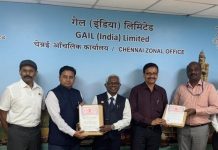Published Originally in Chemical Industry Digest June 2023
Abstract
India’s presidency of the G20 in 2023 emphasizes the vision of ‘One Earth, One Family, One Future.’ Climate action, resource security, and environmental sustainability take center stage, demanding immediate and substantial measures to address the far-reaching impact of climate change. Failing to act boldly today will worsen challenges and hinder future adaptation.
Introduction
2023 has been a landmark year. As India assumed the presidency of G20 summit, it did so with the vision of ‘One Earth, One Family, One Future’. While there have been various themes of Climate Action for year-round deliberation, the focus remains – resource security, environmental sustainability, and climate change. The generation now is witnessing new avenues with significant pivots in globalization and businesses. Rightfully so, as climate actions now have a far-reaching and unprecedented impact, which necessitates immediate and substantial measures – making a now or never even more crucial. Failing to take bold action today would only exacerbate the challenges we face and make future adaptation more challenging and non-sustainable.
Following this, some important global initiatives are in the pipeline that has the potential to make a significant difference in the fight against plastic waste pollution. With the aim to improve waste management, create a sustainable economy, and protect marine life & ecosystem, the UN Environment Program (UNEP) launched the UN Clean Seas Campaign in 2017. Additionally, a legally binding instrument on plastic pollution is currently being negotiated by 175 nations, prompting a major step towards reducing greenhouse gas emissions. Similarly, the Government of India, through Mission LiFE aims to bring about a paradigm shift in our collective mindset and action about sustainability and promoting climate-friendly behavior.
Over the past five years, the industry’s actions have become robust, and this has given rise to innovative approaches and taking targeted actions to mitigate, protect and preserve the future from climate change. There are many islands of excellence that could create a waste-free peninsula and enable us to drive our goal of arresting plastic waste effectively.
Adopting A Circular Economy
Today it is possible to achieve circularity. Recycling of plastics waste has gained momentum in the country, which is repurposed and processed by formal facilities, informal settings, and at the household level. An existing debate is around how much climate-warming greenhouse gases are produced by plastic waste, but there is evidence that alternatives to plastics have a very large carbon footprint and hence replacing it with other choices may not yield long-term sustainable solutions. Perhaps it is crucial to identify the precise issue that needs to be addressed Is plastic itself the problem, or is it the management of plastic waste? Undoubtedly, the latter is the true challenge that requires our attention and collective efforts. One increasingly popular solution is plastic waste management through recycling.There is a need to protect the environment and create an ecosystem that would promote collaboration. The industry is collectively taking strides to redesign and promote reusable and recyclable packaging.
“An existing debate is around how much climate-warming greenhouse gases are produced by plastic waste, but there is evidence that alternatives to plastics have a very large carbon footprint and hence replacing it with other choices may not yield long-term sustainable solutions. Perhaps it is crucial to identify the precise issue that needs to be addressed Is plastic itself the problem, or is it the management of plastic waste?”
The recycling methods for plastic waste materials vary depending on the polymer type, package design, and product type, resulting in different levels of ease and cost-effectiveness. For instance, recycling rigid containers made of a single polymer is easier and more cost-effective compared to recycling packages with multiple layers and components. Hence, the recycling efforts are more focused on rigid packaging (HDPE bottles, cans, PET bottles). Similarly in flexible packaging milk pouches being mono material gets largely recycled and creates economic value for all stakeholders. It is critical for manufacturers to consider the end-of-life impact of the product at the design stage itself known as the ‘Design for Recyclability’ concept and encourage them to adopt mono-material (vs multi-material) recyclable packaging to retail their brands, which would make the whole plastic waste management and recycling efforts more viable.
Gainful end-of-life disposal
As per Organisation for Economic Co-operation and Development’s (OECD) Global Plastic Outlook Report 2019, only 9% of plastic is recycled and 22% is unattended that goes into uncontrolled dumpsites, is burned in open pits, or ends up in terrestrial or aquatic environments. Plastic waste management is predominantly handled by the informal sector with no access to advanced technology, economic incentives, or viable business models. This absence of infrastructure and support leads to difficulties in effectively collecting, transporting, and safely treating and disposing of plastic waste, resulting in leakages. Though the plastic waste reverse chain is informal – there is economic value in what can be done from recollected plastic, one such example is from our projects undertaken in Bangalore, Pune & Lote plant, Maharashtra.
“Plastic waste management is predominantly handled by the informal sector with no access to advanced technology, economic incentives, or viable business models. This absence of infrastructure and support leads to difficulties in effectively collecting, transporting, and safely treating and disposing of plastic waste, resulting in leakages”.
Turning Plastic Waste into Roads
Dow India collaborated with the local authorities and transformed the challenge of using unrecyclable plastic into an opportunity of constructing long-lasting roads thereby promoting circularity and sustainability. Apart from preventing tons of plastic waste from going to landfills or entering the oceans, which can take centuries to decompose, roads constructed using this method exhibit enhanced durability and longevity. Furthermore, they contribute to lower greenhouse gas emissions by substituting approximately 10 % of the bitumen typically utilized in road asphalt. Cost Comparison indicates a saving of Rs. 6.3 lakhs when constructing a plastic bitumen road of 1 km length by 3.75 m width (Source: PWM, Ministry of Housing and Urban Affairs, 2019).
The Circular Economy roadmap identifies opportunities across the entire value chain, placing particular emphasis on downstream concerns such as waste reduction and promoting the reuse and recycling of plastics waste. A plastic waste-free environment requires collaboration among all stakeholders in the value chain. By raising consumer awareness, implementing technology-driven collection systems, and establishing a sustainable ecosystem, we can increase recycling, employment, and hygiene standards. Successful examples from India and around the world can serve as inspiration and guide us toward our goals. This collaborative approach emphasizes community action and civic responsibility, urging individuals, communities, businesses, and governing bodies to work together for a cleaner future.Initiatives such as beach clean-up campaigns, tree plantation,community waste collection campaigns,and school and institutional programs to promote sustainability and an environmentally conscious lifestyle.
Community Action and Civic Responsibility
The Government of India has been playing a significant role in driving action on the ground and gradually pushing toward the adoption of ‘Plastic Waste Management Rules, 2016’, directing businesses towards phasing out non-recyclable plastic material and defining the role of government bodies, industries, and communities. Further, with the implementation of the Extended Producer Responsibility (EPR) regime, Producers, Importers or Brand owners will be responsible to ensure the processing of their plastic packaging waste through recycling, reuse, or end-of-life disposal.
“A plastic waste-free environment requires collaboration among all stakeholders in the value chain. By raising consumer awareness, implementing technology-driven collection systems, and establishing a sustainable ecosystem, we can increase recycling, employment, and hygiene standards. This collaborative approach emphasizes community action and civic responsibility, urging individuals, communities, businesses, and governing bodies to work together for a cleaner future”.
These proactive measures by the government have prompted a positive response from both Indian corporations and the public, resulting in the emergence of numerous waste recyclers in the country, leading to a significant shift in people’s mindset. A notable example of this transformative change can be observed in the Clean India Mission, which has gained traction and garnered support from citizens across the nation.
Moreover, it is crucial to acknowledge the community’s collective efforts in addressing the issue of plastic waste pollution and embracing innovative solutions to combat this problem. Our pan India initiative, ‘My Sustainability Corner’ is to gain momentum to generate awareness on plastic waste management in schools and surrounding communities of our plants. This initiative brings forth the principles of- Reduce, Reuse, Recycle, and Recover- fostering a shift in behavior towards plastic waste among the communities and encouraging them to embrace environmentally conscious practices and sustainable living. In collaboration with the NGO partner, Sahyadri Nisarg Mitra (SNM) the collection, separation, and segregation of plastic is undertaken and later recycled to provide a gainful end of life to plastics, demonstrating the company’s dedication to sustainability.
The incorporation of the circular economy presents a significant opportunity for material science and chemical companies to combat climate change effectively in the most purpose-driven manner and create sustainable solutions to provide gainful end-of-life plastics. Achieving the circularity objectives necessitates collaboration and cooperation among all stakeholders, including individuals, government bodies, industries, private enterprises, public organizations, and informal sectors.Together we can pave the way for a harmonious coexistence with nature, leaving a legacy of sustainability for generations to come. Let us embark on this mission, for our lives and the future of our planet by promoting collaborations, technological innovation, and adapting the best practices across industries.































